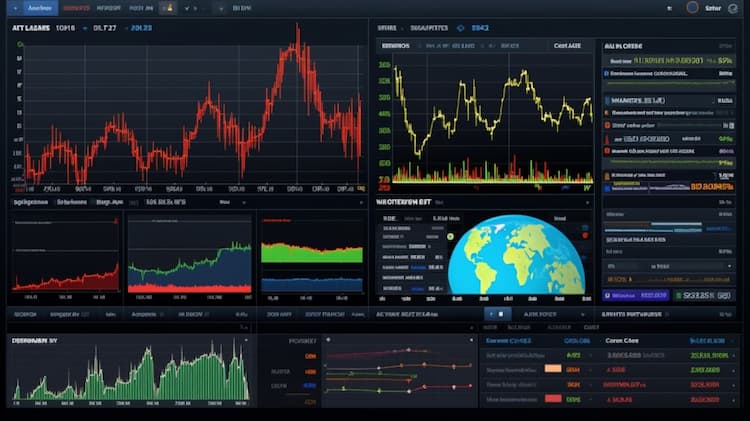
INDY VS SMIN: A Comprehensive Comparison of ETFs
India's burgeoning economy has attracted significant global attention, making it a lucrative market for investors. In this article, we will deeply analyze two popular India-focused ETFs, INDY (iShares India 50 ETF) and SMIN (iShares MSCI India Small-Cap ETF), in terms of tickers, full names, issuers, sectors, top holdings, capitalization, strategy, tracking, and exposure.
INDY > SMIN: Overview
INDY and SMIN are both designed to give investors exposure to the Indian market, but they approach this in different ways. INDY focuses on the top 50 Indian companies, offering a large-cap orientation, while SMIN aims to capture the performance of small-cap companies in India. These different approaches mean different types of market exposure, making it vital for investors to choose wisely.
INDY > SMIN: Issuers and Objectives
INDY is managed by BlackRock's iShares and aims to track the NSE Nifty 50 Index. SMIN is also managed by iShares but focuses on the MSCI India Small Cap Index. The issuers, although the same, offer different products tailored to various investment needs, either for those seeking stability in large-cap stocks or those looking for growth in small-cap companies.
 INDY overlap INDY VS SMIN: A Comprehensive Comparison of ETFs
INDY overlap INDY VS SMIN: A Comprehensive Comparison of ETFs
INDY > SMIN: Sectors and Top Holdings
INDY has a diversified sector exposure including financial services, IT, and energy, with top holdings such as Reliance Industries and HDFC Bank. SMIN, in contrast, leans more towards consumer discretionary, healthcare, and industrial sectors, featuring companies like Persistent Systems and Avanti Feeds. This sectoral differentiation can significantly impact the risk and return profiles of the two ETFs.
INDY > SMIN: Capitalization and Assets Under Management
INDY generally has a higher Asset Under Management (AUM), indicative of its broader appeal and liquidity. SMIN, although smaller in terms of AUM, offers an avenue for investors interested in the higher-growth potential of smaller companies. These AUM figures are key indicators of market confidence and could sway an investor's decision.
INDY > SMIN: Strategy and Tracking
Both ETFs employ a passive investment strategy. INDY tracks the NSE Nifty 50 Index, providing a representation of the large-cap segment of the Indian market. SMIN tracks the MSCI India Small Cap Index, offering a more diversified but potentially volatile exposure to the small-cap sector. Understanding these tracking methods is essential for aligning the ETFs with your investment goals.
INDY > SMIN: Exposure and Risks
INDY offers a more stable but possibly less exciting exposure due to its large-cap focus. SMIN provides a more volatile but potentially rewarding exposure given its focus on small-cap stocks. These different risk profiles must be carefully considered in the context of one's investment strategy and risk tolerance.
Conclusion
INDY and SMIN offer distinct pathways to invest in the Indian market, catering to different risk appetites and investment horizons. For those who wish to dig deeper, ETF Insider is your go-to app for a comprehensive understanding of holdings, correlations, overlaps, and more, all presented in a user-friendly interface.
Disclaimer: This article does not provide any investment advisory services.
INDY ETF issuer
INDY ETF official page
INDY quote and analysis
Discover the top holdings, correlations, and overlaps of ETFs using our visualization tool.
Our app allows you to build and track your portfolio.
To learn more about the INDY iShares India 50 ETF, access our dedicated page now.






